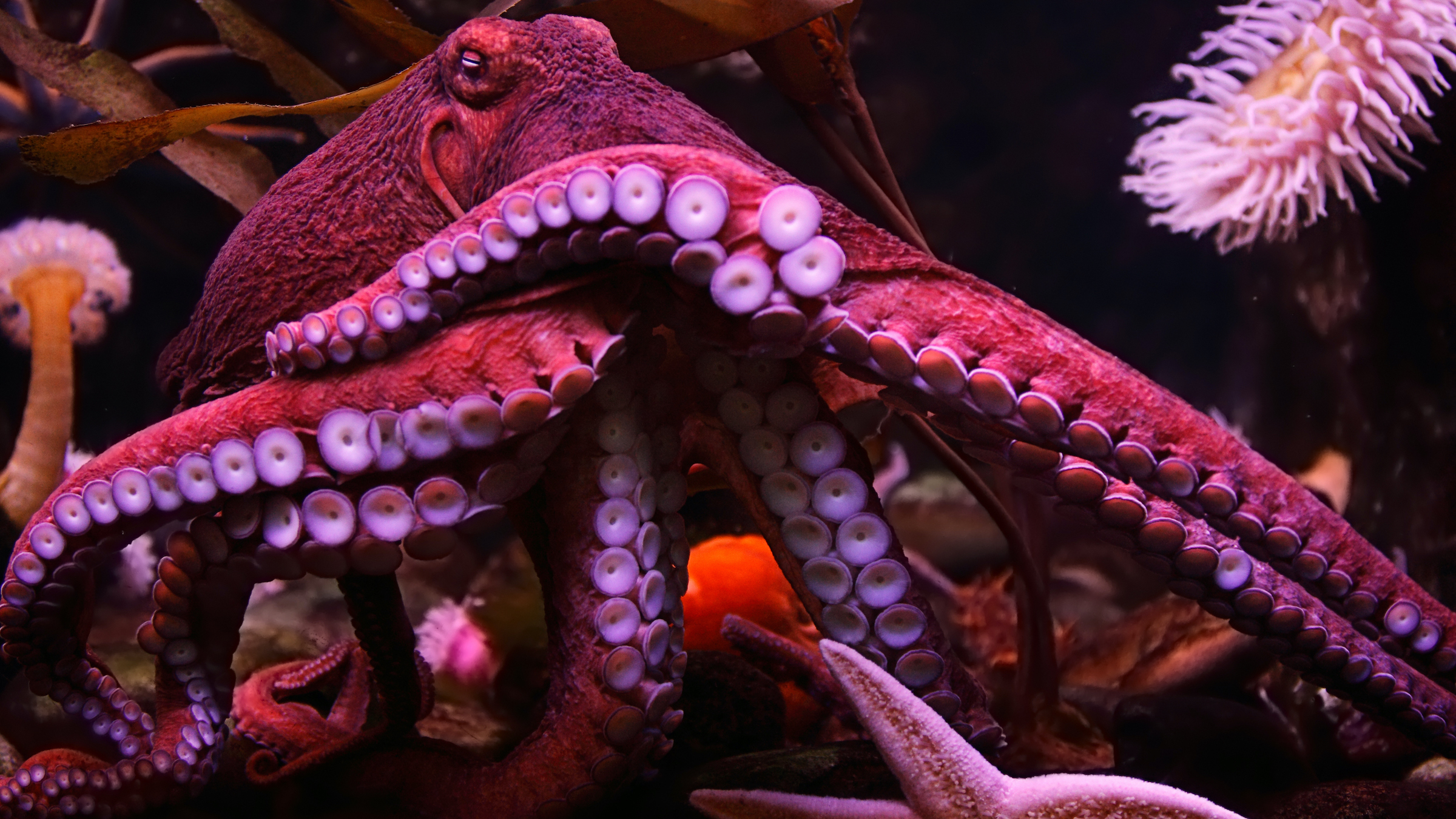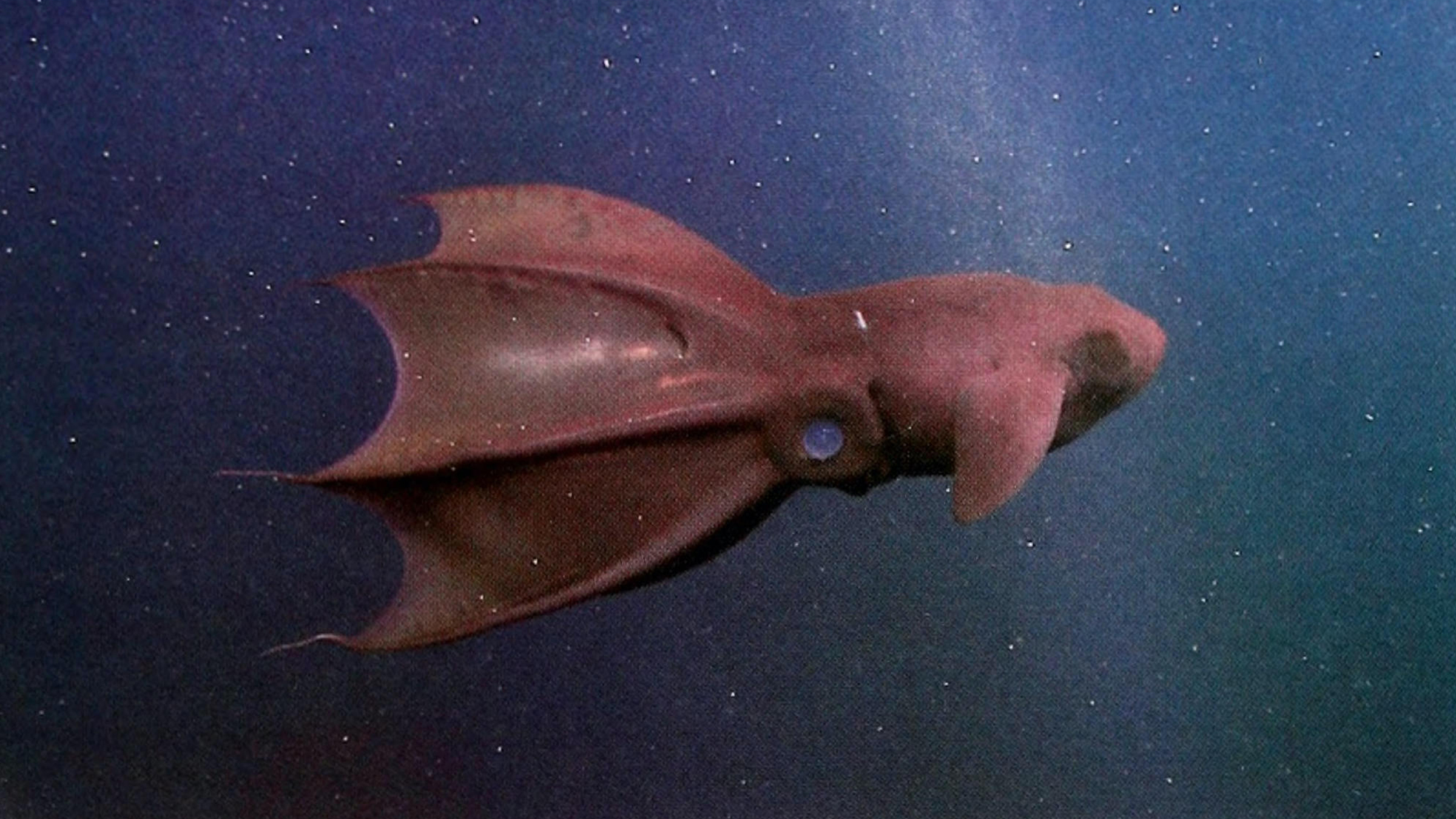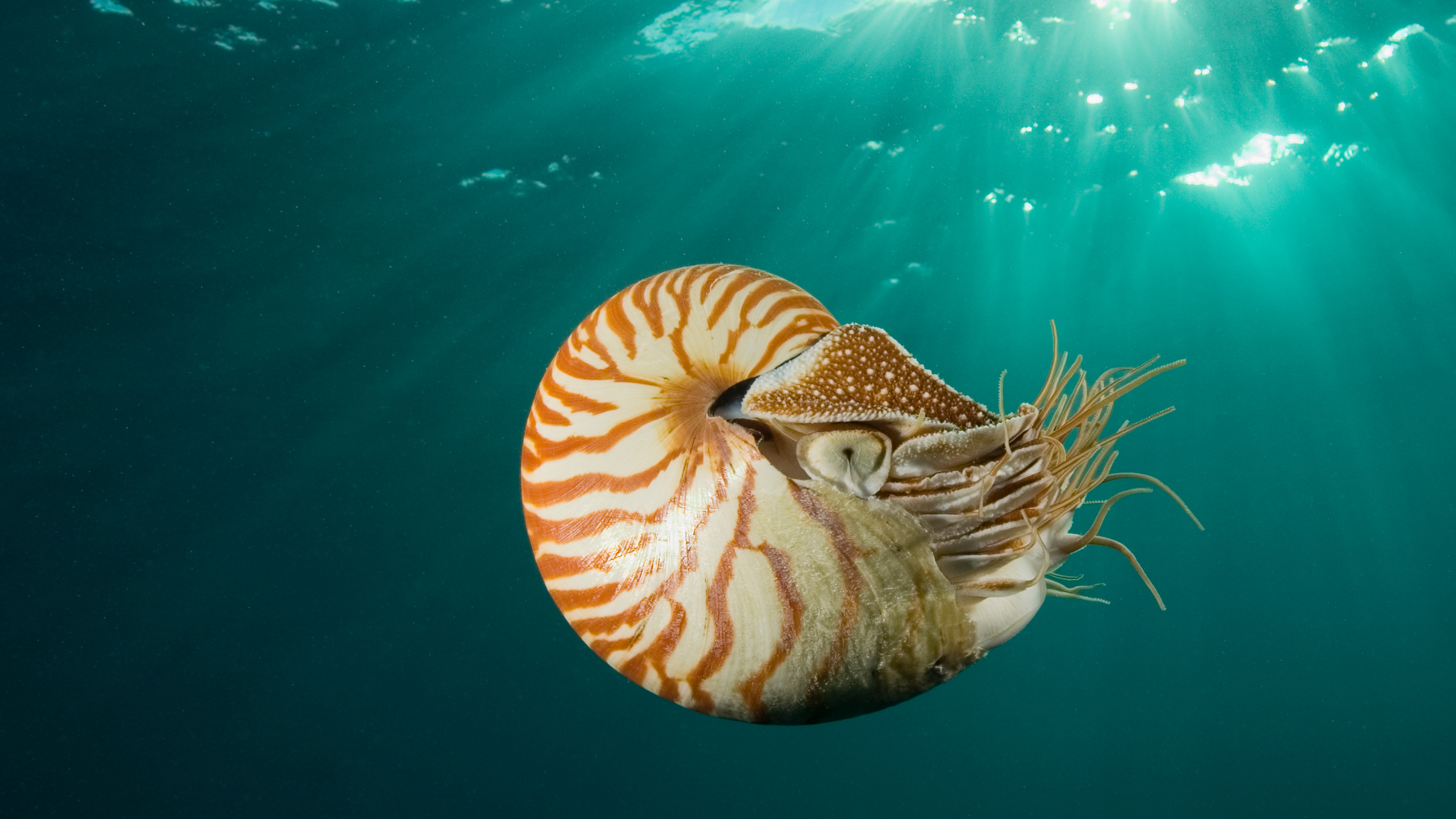What's the difference between arms and tentacles?
Do any animals have both?

Octopuses are famous for their eight sucker-covered arms, whereas squids, from giant Architeuthis dux to the appetizer-size critters served at restaurants, swim with even more appendages: eight arms and two tentacles. So, what's the difference between these different types of boneless limbs?
Squids, octopuses and their hard-shelled nautiloid relatives are all big-brained members of the class Cephalopoda. With the exception of ancient nautiloids, all living cephalopod species fall under the category of either eight-legged Octopodiformes or 10-legged Decapodiformes, and have muscular, sucker-laden arms. However, only squids, cuttlefish, bobtail squids and other members of Decapodiformes have tentacles, and only vampire squid sport stringy appendages called filaments, according to a paper published in 2017 in the Journal of Molluscan Studies. The difference between all of these cephalopods' limbs, it turns out, largely comes down to shape and sucker placement.
"The basic difference is arms have a line of suckers going down them, whereas tentacles don't have suckers until you get to the tentacular clubs, which are the kind of large part at the end," Morag Taite, a postdoctoral research associate at Aberystwyth University in Wales, told Live Science.
Related: What's the biggest group of animals ever recorded on Earth?
Broadly speaking, suckers help cephalopods adhere to or sense the world around them. For instance, having eight sucker-covered arms enables octopuses to walk, grab prey, hang onto surfaces such as coral reefs, and "taste" through a sense called chemotactility. In contrast, the more free-swimming squids use their tentacles primarily for hunting. Their tentacular clubs can also feature hooks — thick, ensconced in muscle and curved, sometimes as sharply as a fisherman's hook — which many squids use to snare prey they encounter in open water, or the water column.
"In the water column, they'd be feeding on things like shrimp, which are quite fast, so they need to grab them," said Taite, who employs DNA barcoding to study cephalopod evolution and family trees. "And the hooks also help them to pull the prey to them, whereas the octopods would mostly use their arms for walking."
Some squids, like colossal squid (Mesonychoteuthis hamiltoni) — which weigh a whopping 1,100 pounds (500 kilograms), almost twice as heavy as giant squid — have hooks that line both their arms and tentacles. In the case of colossal squid, which live in the cold waters of the Southern Ocean around Antarctica, the arm hooks are rigid and set into dense musculature, whereas the tentacular hooks can rotate in place. Despite that degree of armament, colossal squid are ambush predators, preferring to sit and wait for unsuspecting prey to come close enough to be grabbed. The strategy isn't restricted to squids of their size or habitat, either — Hawaiian bobtail squid (Euprymna scolopes), which average just over an inch in length, bury themselves in the sand of shallow waters, where they wait to attack shrimp, prawns and even small octopuses with their tentacles.
Get the world’s most fascinating discoveries delivered straight to your inbox.
Even stranger than hook-filled clubs are the lengthy filaments boasted by vampire squid (Vampyroteuthis infernalis). Vampire squid are the only cephalopods that spend their entire lives in the ocean's lightless oxygen minimum zone, which occurs about 656 to 3,280 feet (200 to 1,000 meters) under the water's surface, according to the Monterey Bay Aquarium Research Institute in California. Because vampire squid live at such extreme depths, they're challenging to study — researchers discovered the function of their filaments only in 2012, as detailed in the journal Proceedings of the Royal Society B: Biological Sciences.
By using remotely operated vehicles to monitor the dietary habits of wild vampire squid and the Monterey Bay Aquarium's dark, cold room to observe the habits of collected specimens, the team learned that vampire squid use their two filaments to catch decaying matter that drifts down from shallower regions of the ocean. Vampire squid, which are named for the cape-like webbing between their arms (not their dietary habits), are more closely related to modern octopuses than to squids and spend most of their time floating on ocean currents, waiting to detect a snack with the filaments that complement their eight webbed arms.
Related: What is the toothiest animal on Earth?
"They can put the filaments out, and there are these hairs on them so they can move the food up towards their mouth," Taite said. Despite possessing two filaments, vampire squid typically deploy only one filament at a time, according to the 2012 study. After they retract a filament and drag it across their arms, which secrete a mucus that binds to the foods, vampire squid gobble up the mucus-coated morsel.
Nautiloids, which have striking shells and have changed very little since they emerged more than 440 million years ago, have the most tentacles of any living cephalopod, though the appendages are morphologically different from those of their distant relatives, squids and octopuses. The "living fossils" sport close to 90 tentacles replete with adhesive ridges, rather than suckers, which they use to trap prey.
Meanwhile, like squid, cuttlefish have eight arms and two tentacles, which they rapidly deploy to catch fast-moving prey like shrimp and fish, according to a 1984 study published in the journal Behavioral Processes. And while the suckers of an octopus boast 10,000 chemoreceptors each, allowing it to taste what it touches, a cuttlefish's suckers contain only about 100 each, according to a 1996 study published in the journal Marine and Freshwater Behaviour and Physiology.
Given this variety of both form and function, Taite said it isn't really possible to compare the benefits of cephalopod tentacles and arms.
"I wouldn't say it's more like pros and cons," she said. "You can't really put them against each other because they live in different environments, so they need different methods [of survival]."
Originally published on Live Science.

John Arnst is a freelance science writer and editor based in Washington, DC. He writes about every corner of life sciences he can get his hands on, and much of his work can be found in the magazine for the American Society for Biochemistry and Molecular Biology, where he was a staff writer for four years. He has degrees in English literature and biology from the University of Florida and two very vocal black cats.





